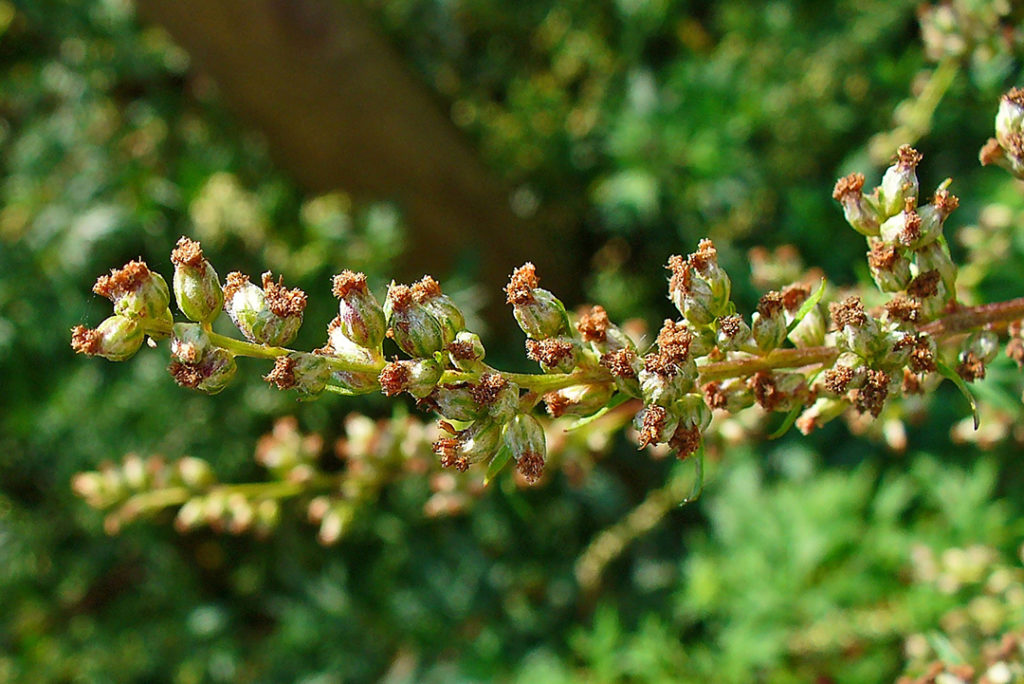
Jordan
Artemisia
Artemisia

General Description / Cultural Significance
Artemisia is an aromatic shrub and herb that grows wild in Jordan. Its leaves smell strong, similar to sage, and the plant is valued as a medicine. People in Jordan boil and drink it in tea in order to relieve abdominal pain. In general, fragrance is highly significant to people in Jordan, as scent is historically a large aspect of Islam. The Koran mandates that a person must stand clean and of good scent before God. Physical cleanliness and good smell is important. Artemisia is used as an herb and medicine by aboriginal Bedouins and is now a medical herb that is used widely in pharmacology including in the treatment of malaria, hepatitis, cancer, inflammation, and infections by fungus, bacteria, and viruses. Artemisia’s essential oil too has a broad spectrum of bioactivity that has also been used for centuries.
Climate Change/Conservation Status
Jordan is a semi-arid and arid region with seriously scarce water resources. The country depends primarily on precipitation within the country for water, which makes it extremely vulnerable to the temperature increases and changes in precipitation patterns of climate change. The country is focusing many projects to address water scarcity including a new framework for wastewater reuse, especially in agriculture.
A study from Taibah University for Science confirmed that “the mean local temperature in Jordan has increased rapidly since 1992 by 1.5–2 °C.” Increases in the maximum and minimum temperatures in the majority of Jordan are of great concern because of the effects of heat stress on human and animal life and agriculture viability.
A 2017 study on the adverse effects of climate sees freshwater management as a looming challenge: “In Jordan, the confluence of limited water supply, future drought, and transboundary hydrologic impacts of land use severely challenges achieving freshwater sustainability.” The adaptive capacity of Artemisia even in desert-like conditions makes it an important plant for managing at-risk areas and habitat restoration. Although Artemisia is a heavily used plant, it does not appear to be in jeopardy at this time in Jordan.
Alternate Names
Mugwort
Sagebrush
Desert wormwood
Sources
Abu-Darwish, M.S., et. al., 2015. Artemisia herba-alba essential oil from Buseirah (South Jordan): Chemical characterization and assessment of safe antifungal and anti-inflammatory doses. J Ethnopharmacol, [website] 4(174), pp. 153-160. DOI: 10.1016/j.jep.2015.08.005.
Mission of the Hashemite Kingdom of Jordan to the United Nations. This statement can be found on the World Sensorium original website.
Rajsekhar, D., & Gorelick, S. M., 2017. Increasing drought in Jordan: Climate change and cascading Syrian land-use impacts on reducing transboundary flow. Science Advances, [website] (3)8. DOI: 10.1126/sciadv.1700581
The Royal Society for the Conservation of Nature, Jordan. This statement can be found on the World Sensorium original website.
Sanjerehei, M. M., & Rundel, P. W., 2017. The Impact of Climate Change on Habitat Suitability for Artemisia sieberi and Artemisia aucheri (Asteraceae) — a Modeling Approach. Polish Journal of Ecology, [website] 65(1), pp. 97-109. DOI: 10.3161/15052249PJE2017.65.1.009
World Health Organization, Climate Change Adaptation to Protect Human Health. [website]

